How to Draw a Black and White Landscape
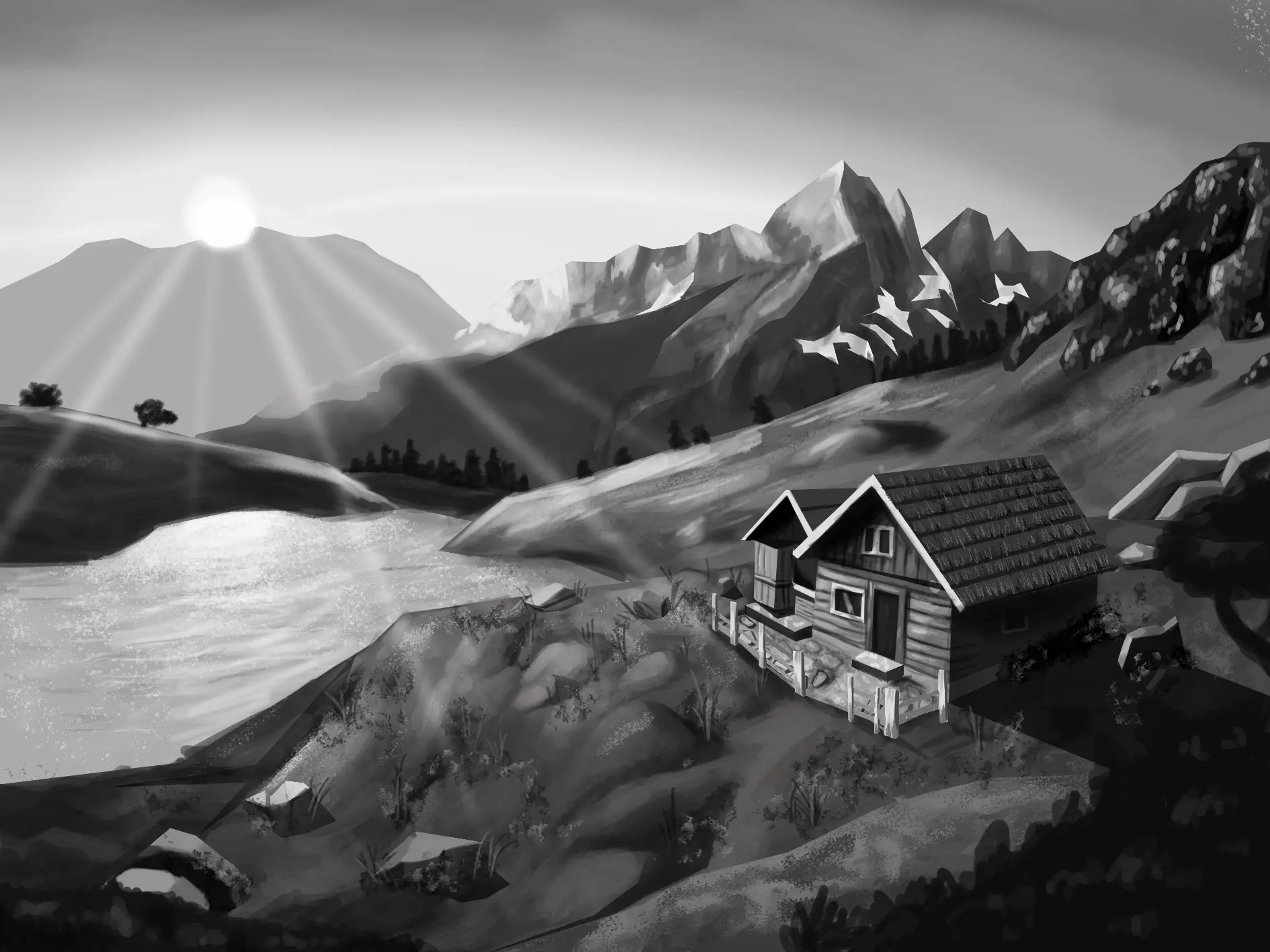
The world around us offers spectacular and soothing natural shows every day.
You are probably also sensitive to the poetry of landscapes and want to translate their beauty onto paper. Today, I suggest a captivating theme: not only to draw a landscape, but also to approach it in shades of gray to reveal all its elegance. Let's take this monochrome photograph as our starting point, which invites us to contemplate nature with a majestic gaze.
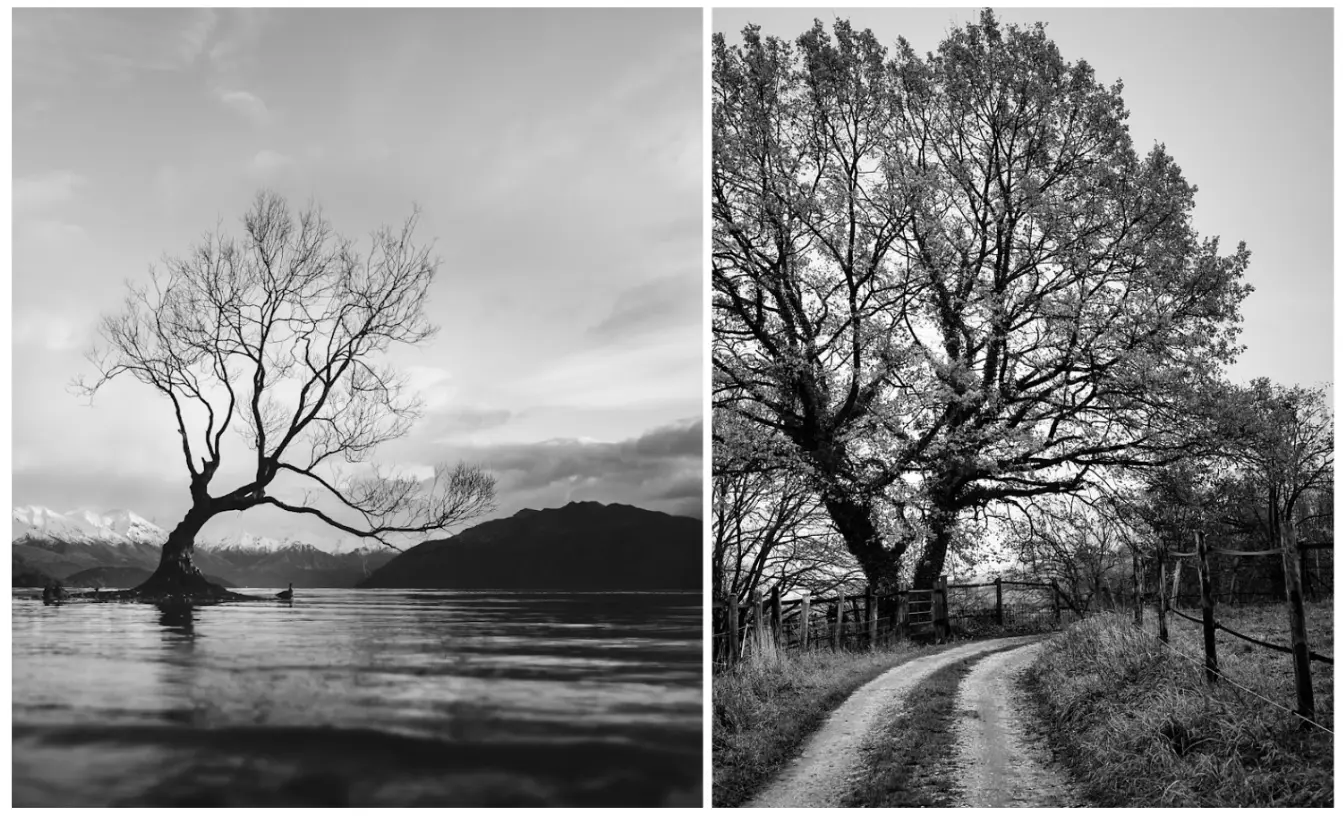
How to create your scene
Let's start with the basics. To achieve a convincing result, it is essential to properly structure your drawing. You can look for references to compose an original scene, or try to reproduce a landscape that you particularly like.
In any case, take the time to carefully observe and analyze the image. Here are some composition rules to keep in mind for a balanced and harmonious image:
Identify points of interest using the rule of thirds
By dividing the image into three horizontal bands and three vertical bands, you reveal four intersection points.
Placing key elements on these "strong points" immediately enhances their visual presence.
In our example, I positioned the house on one of these points, which brings us to the following principle.
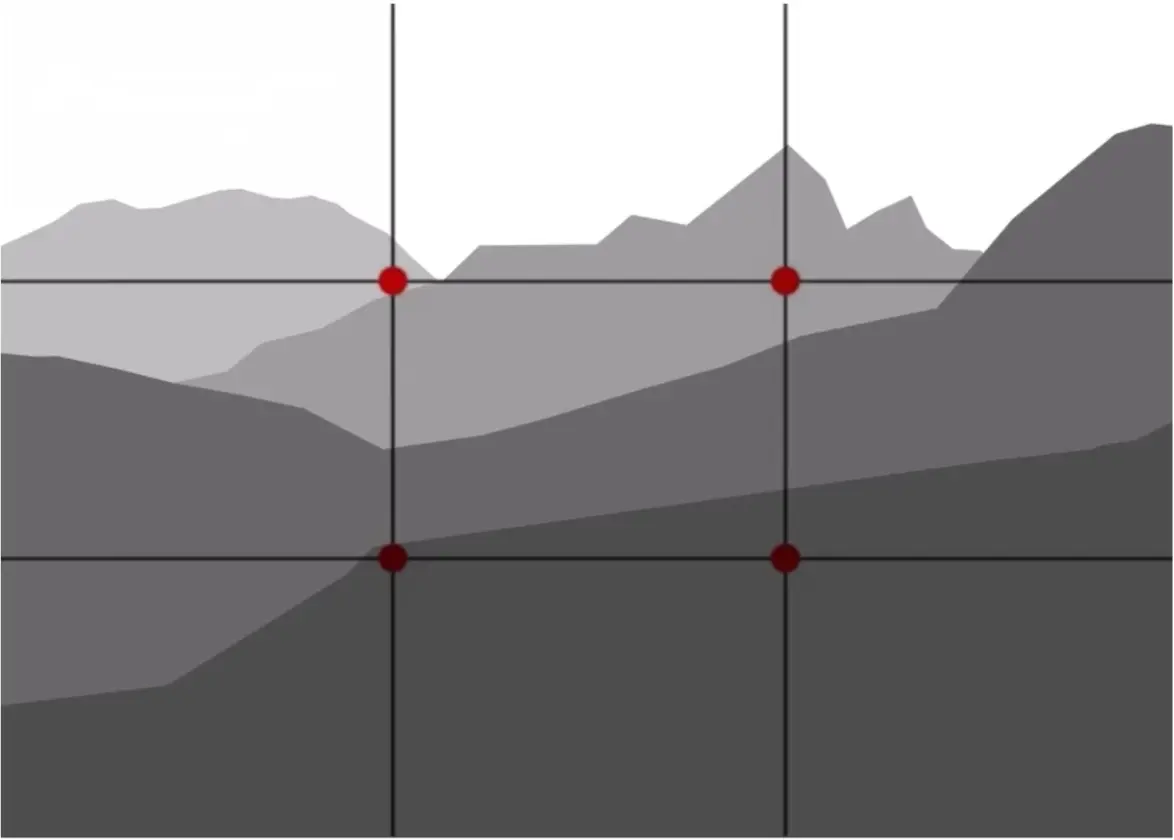
Evenly distribute the elements in your drawing
It is essential to distribute the elements of the composition in a balanced way, without seeking perfect symmetry.
Let's return to the example: the house is placed on a strong point; to balance it, we introduce an element of comparable visual weight opposite it. Here, I have chosen the sun which, despite its very simple shape, plays a central role in the interpretation of the scene.
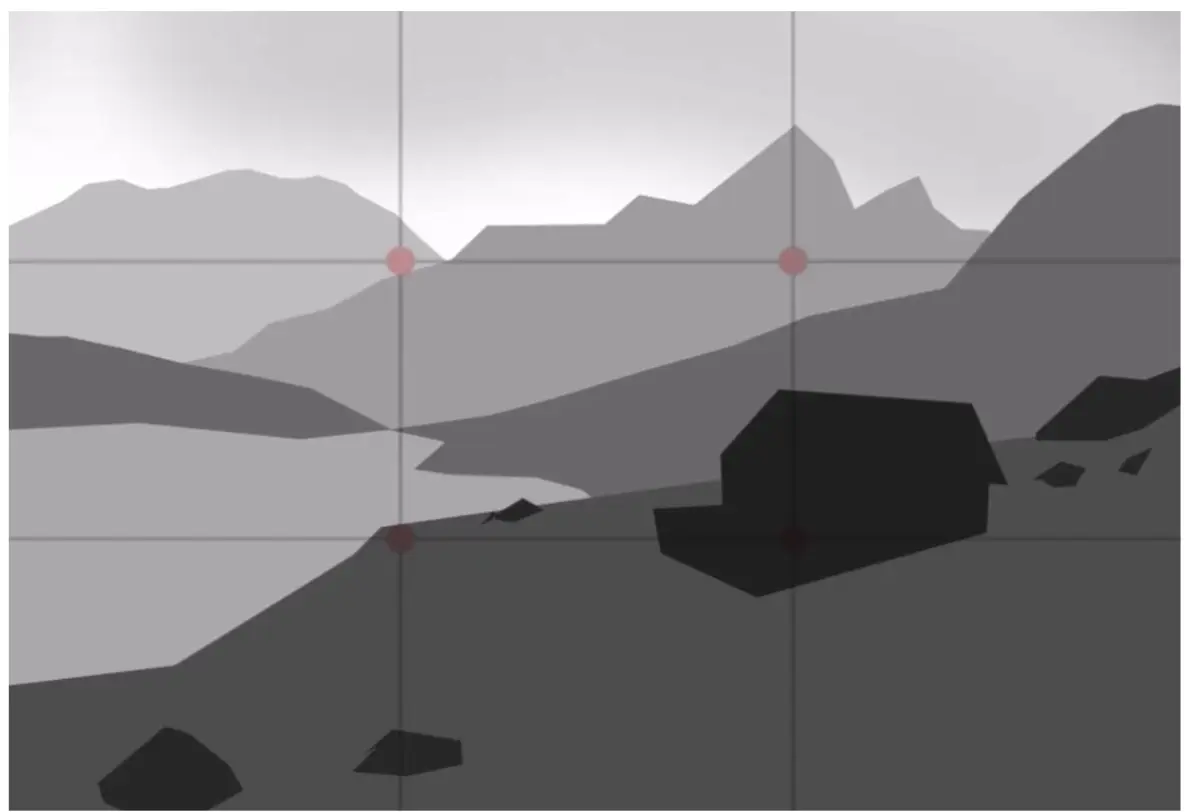
Define a focal point
Every landscape must have a main subject, a true focal point.
The rule of thirds can help you there, but you can also direct the gaze by arranging the elements so they converge towards that point.
Paths, light contrasts, or the simplification of secondary elements naturally guide the eye.
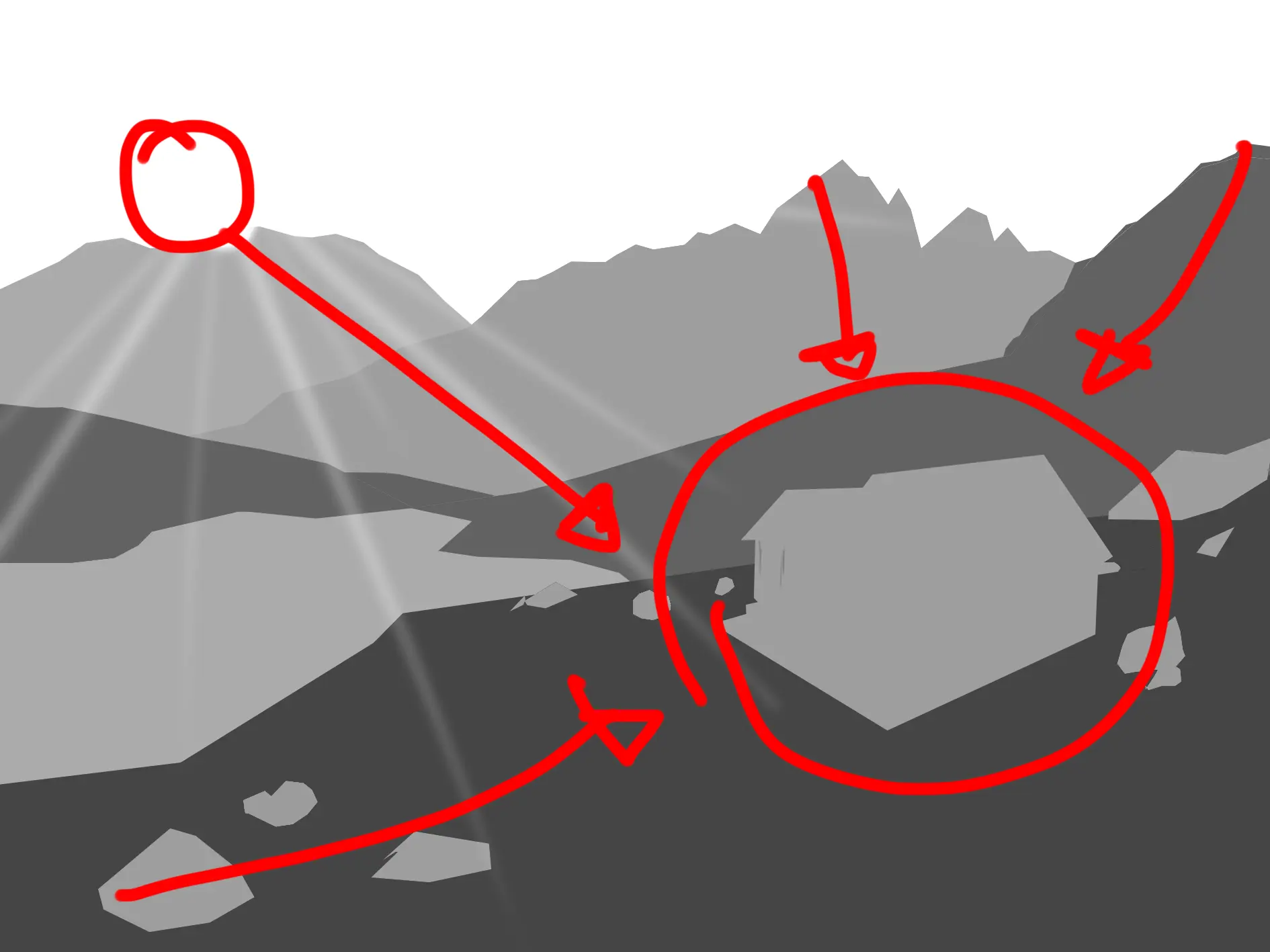
Practical tips
Avoid constructing everything with sharp outlines: first work in spots and masses. This stimulates creativity and gives a more expressive rendering.
The further away an object is, the more it loses detail and contrast. In the foreground, the shadows are pronounced and the lights brighter; in the background, the values lighten and the contrasts soften. Pay attention to the small "living" details: blades of grass, pebbles, leaves, small animals... They give rhythm and make the landscape realistic.
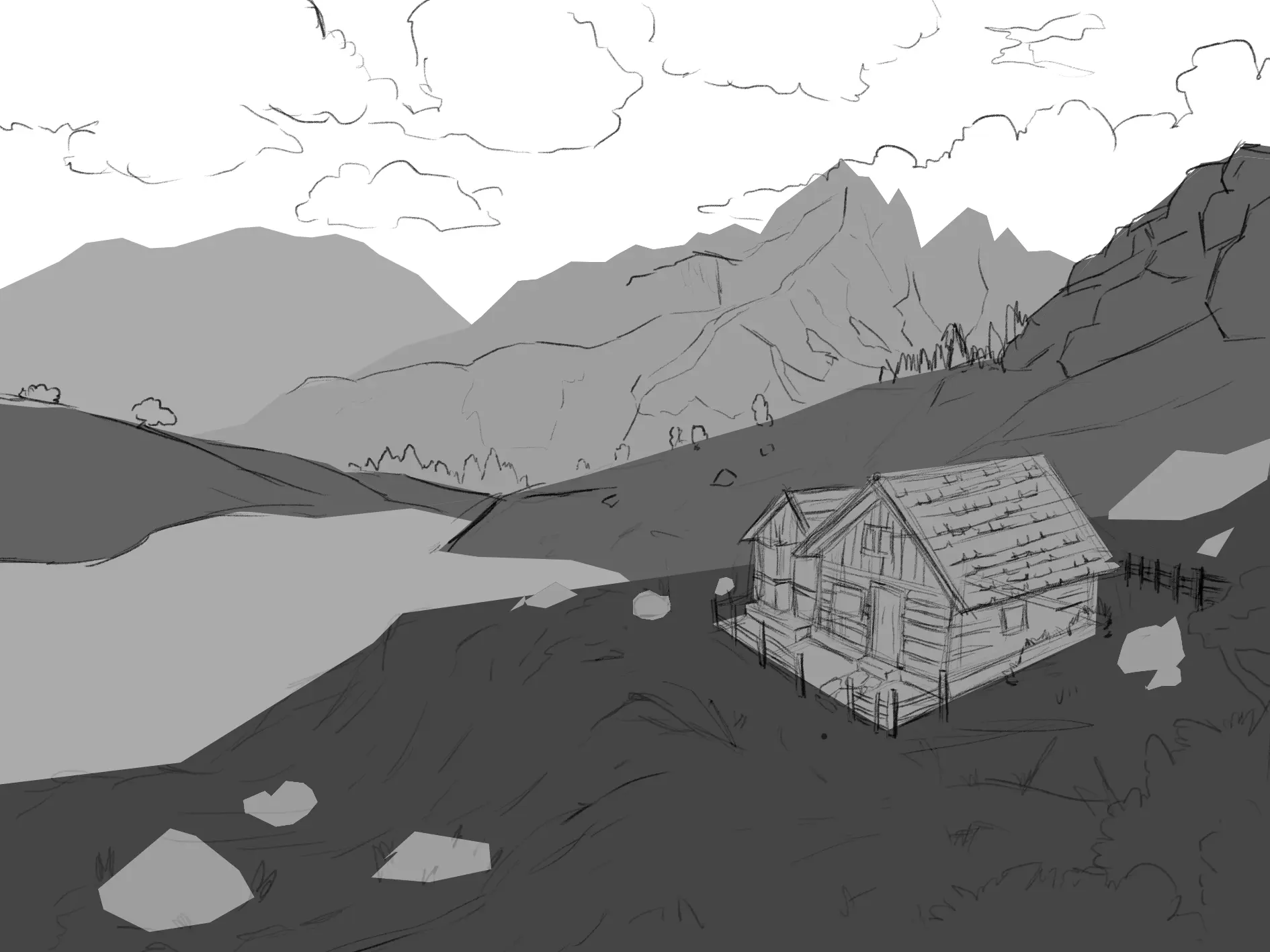
Mastering the scale of values
Drawing in black and white restricts the palette, which may seem limiting.
The use of well-measured contrasts then becomes crucial to differentiate between planes and shapes.
We have already applied this principle by progressively lightening the grays as the elements move away.
Another example: I drew the house in very dark gray on a medium gray ground, ensuring a clear and visible separation.
Define the house with shades of gray
Start by structuring the house using bright contrasts.
Vary the shades, distinguish walls, windows, door, and roof.
Do not hesitate to reserve almost pure white to highlight important elements, such as window frames or the ridge of the roof.
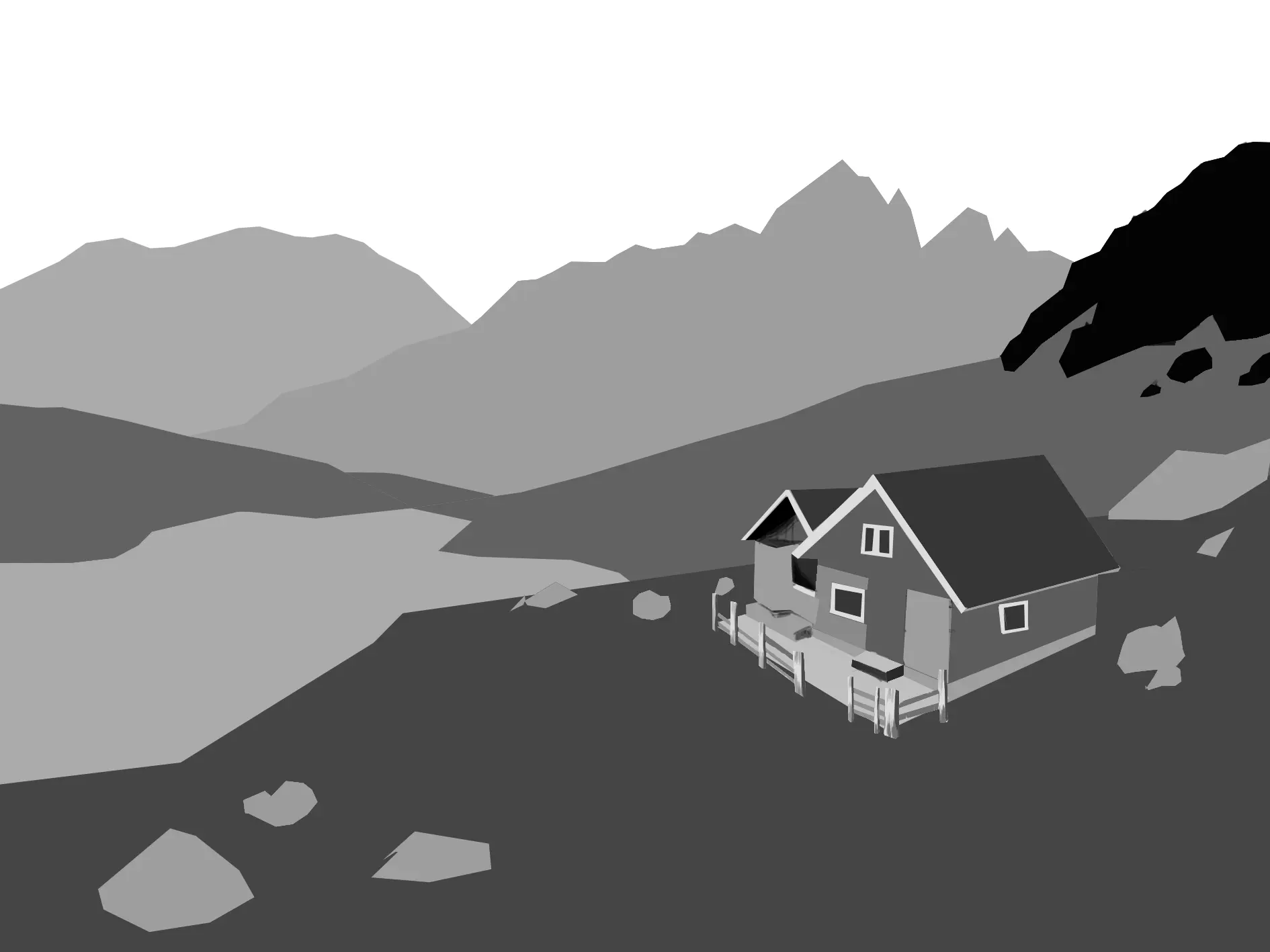
Finalize the drawing plane by plane
Foreground
The dark strip at the bottom of the image serves as a true foreground: a few very dense spots are enough.
It acts as a visual margin, adds depth, and deliberately remains very little detailed.
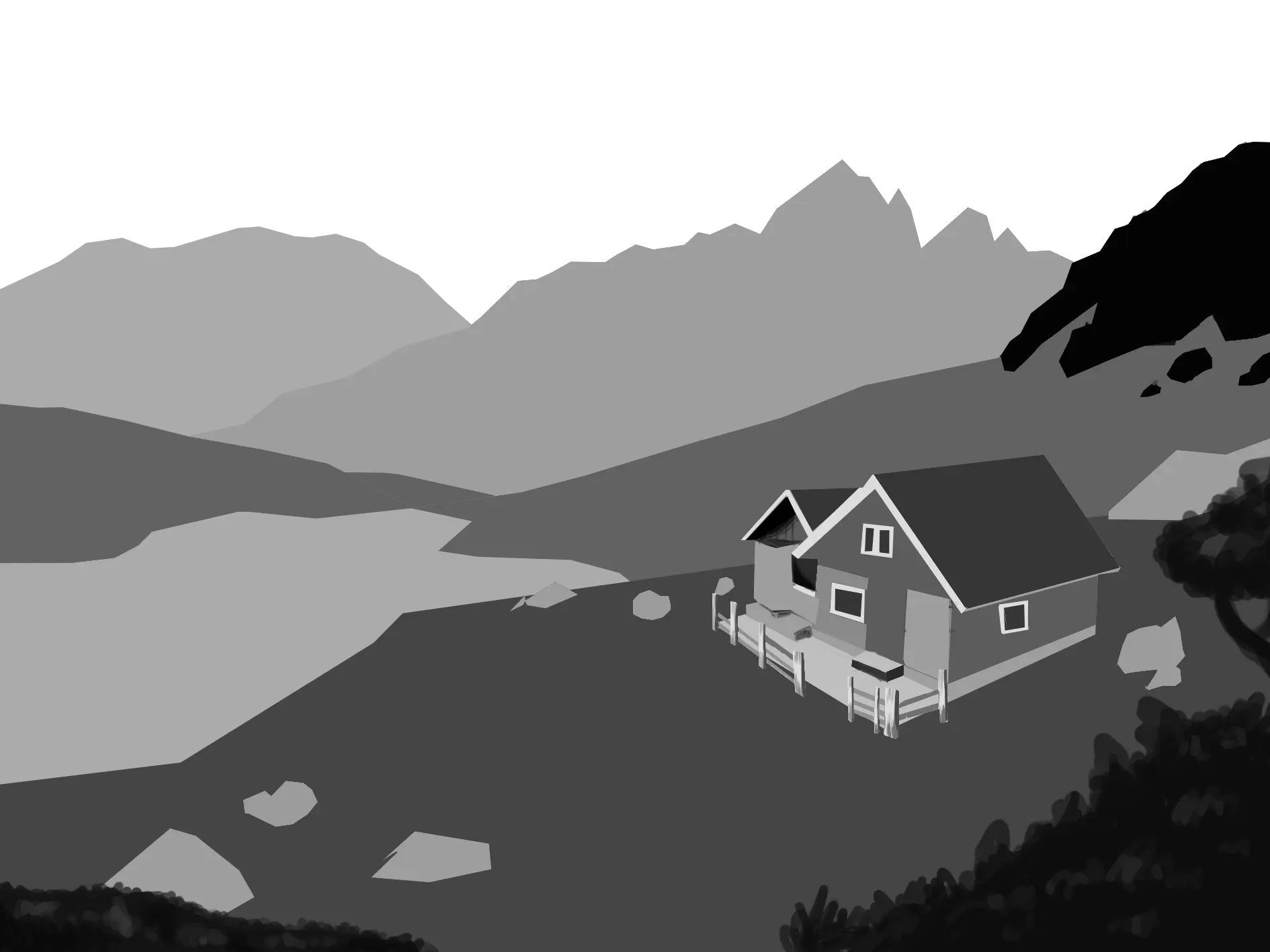
Main plane
This is the heart of the scene: this is where key elements and the focal point (here, the house) are placed. Focus your efforts here: accuracy of the drawing, richness of textures, and consistency of materials.
For example, take notice of the long thin and irregular lines of the wood, the sharp and contrasting shadows of the rocks, the smooth surfaces and their reflections.
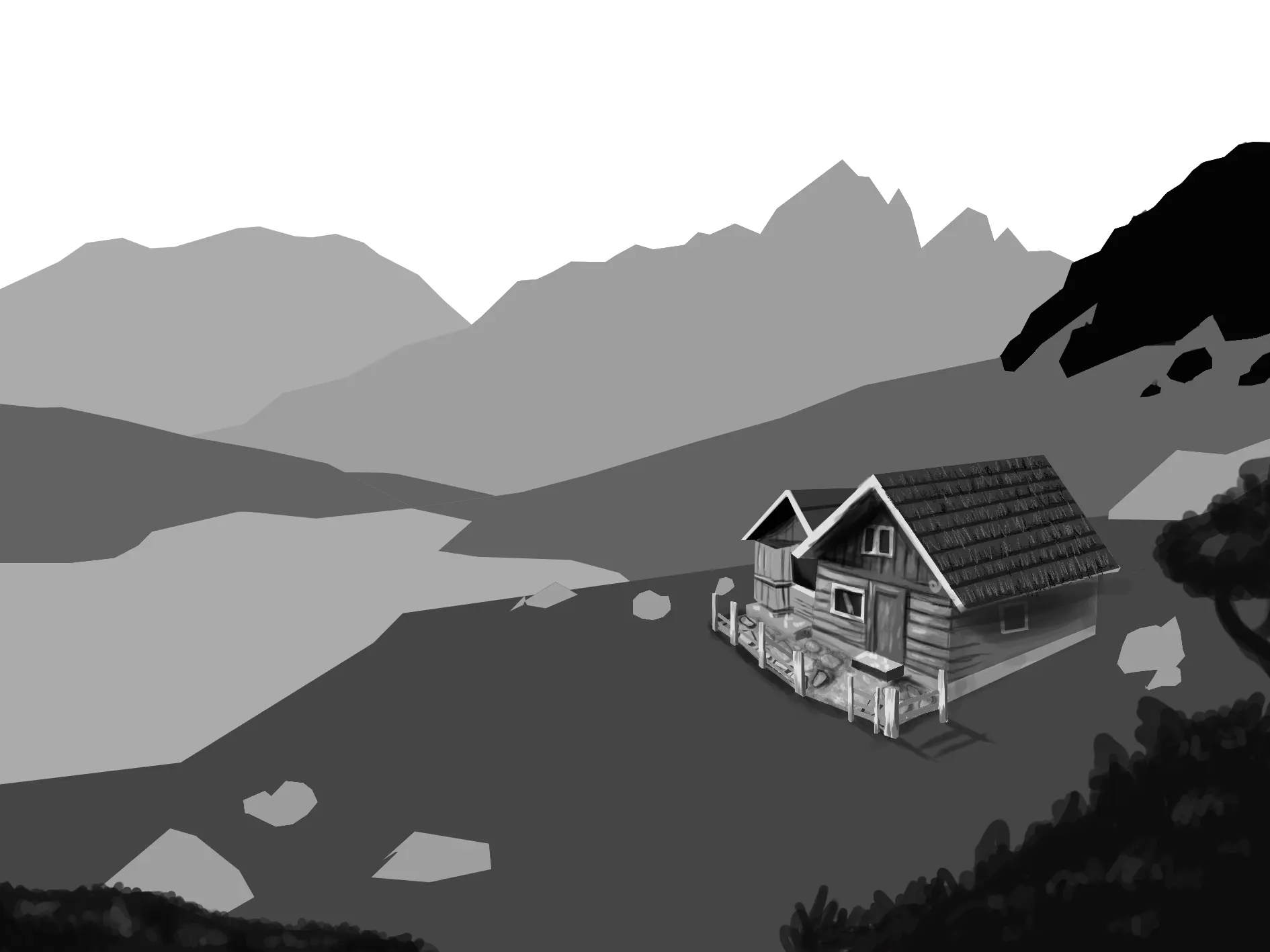
To add relief, start by breaking up large surfaces by introducing controlled "chaos": undulations of the terrain, hollows, cliffs, cavities…
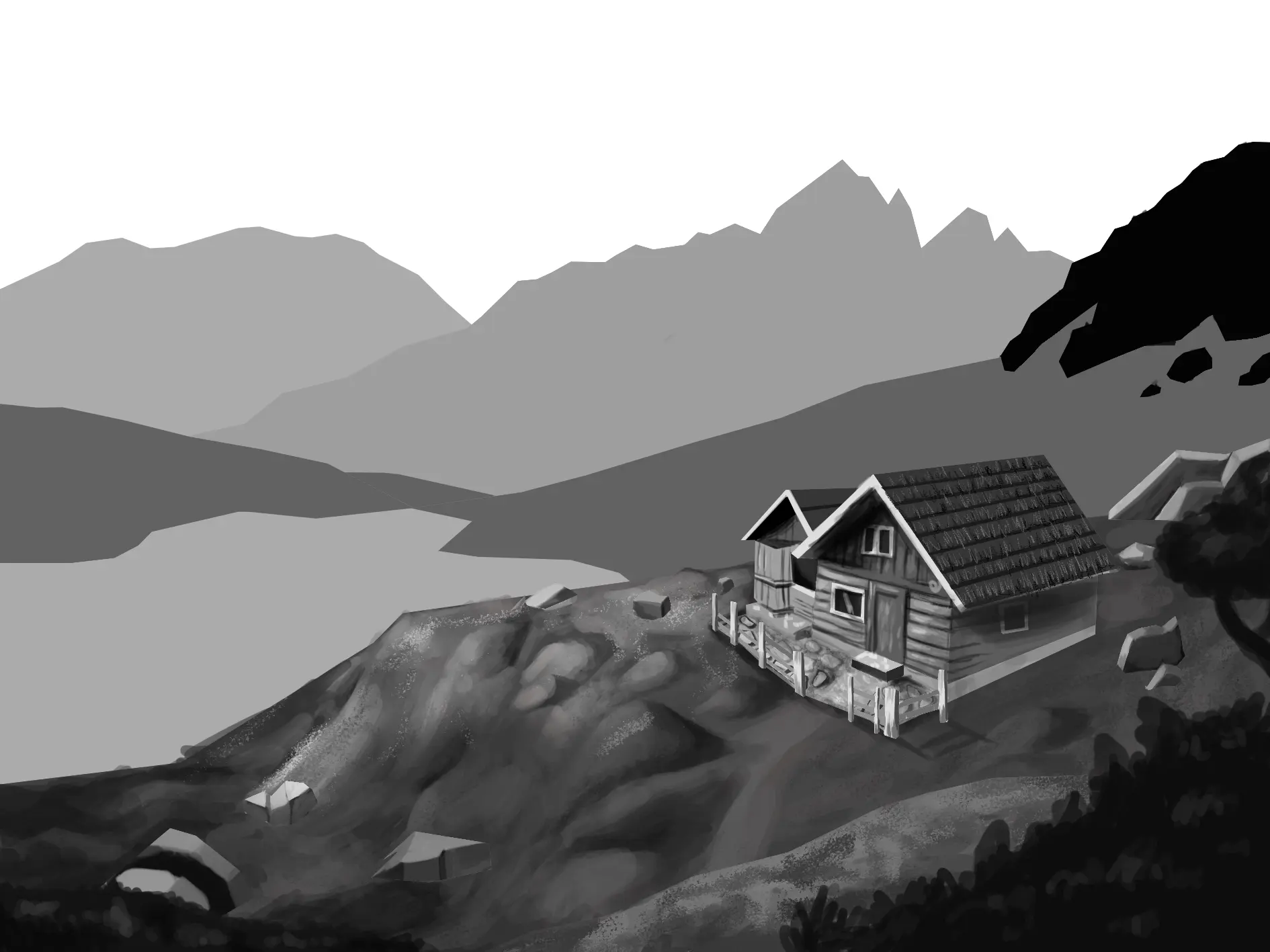
Then add decorative details (stones, herbs, flowers, trunks, etc.). Let intuition guide you to enrich the scene without overloading it.
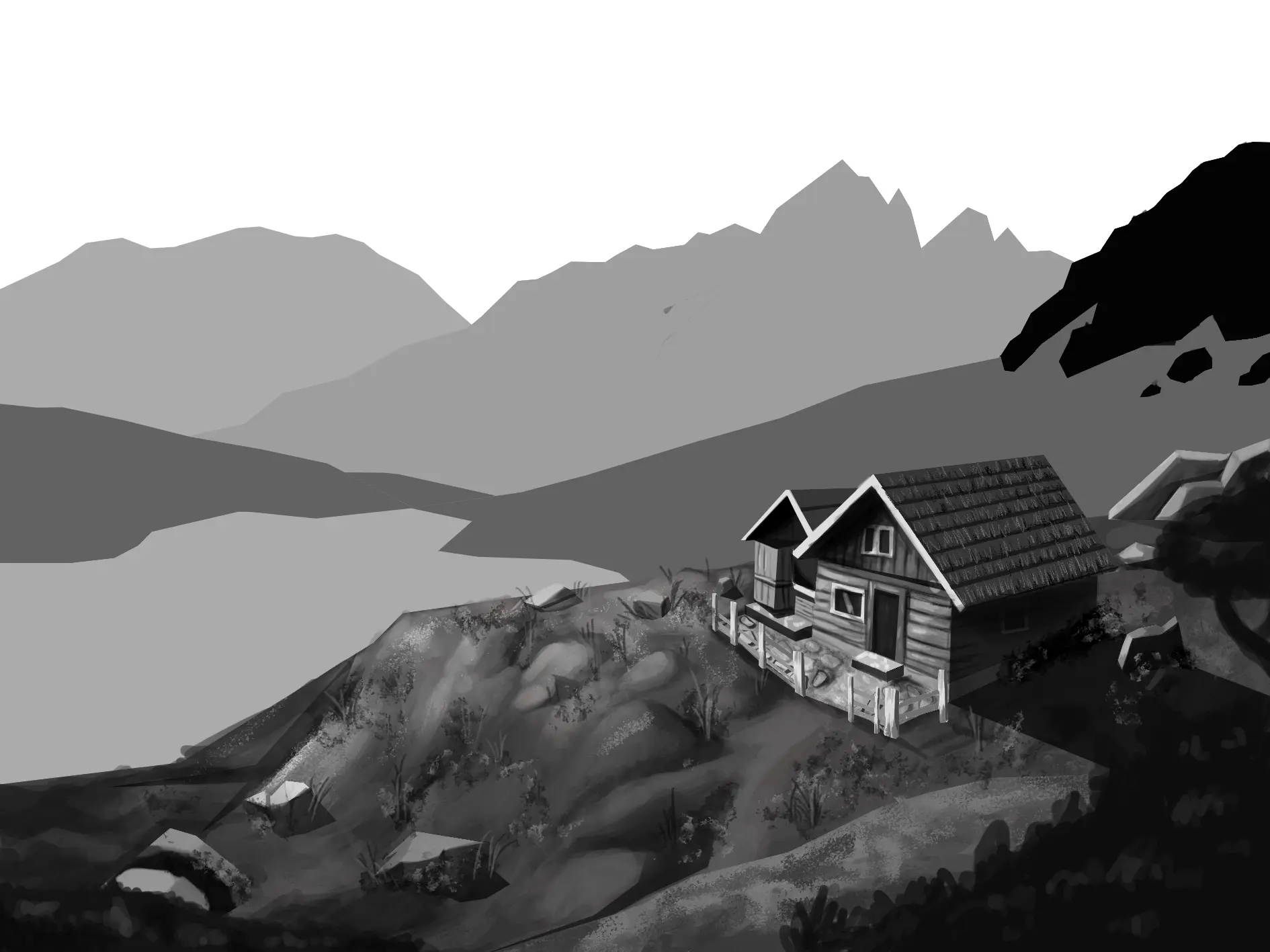
Third plane
This layout complements the visual information of the main plane. I have placed a hill, some distant trees (suggesting a forest), and a lake.
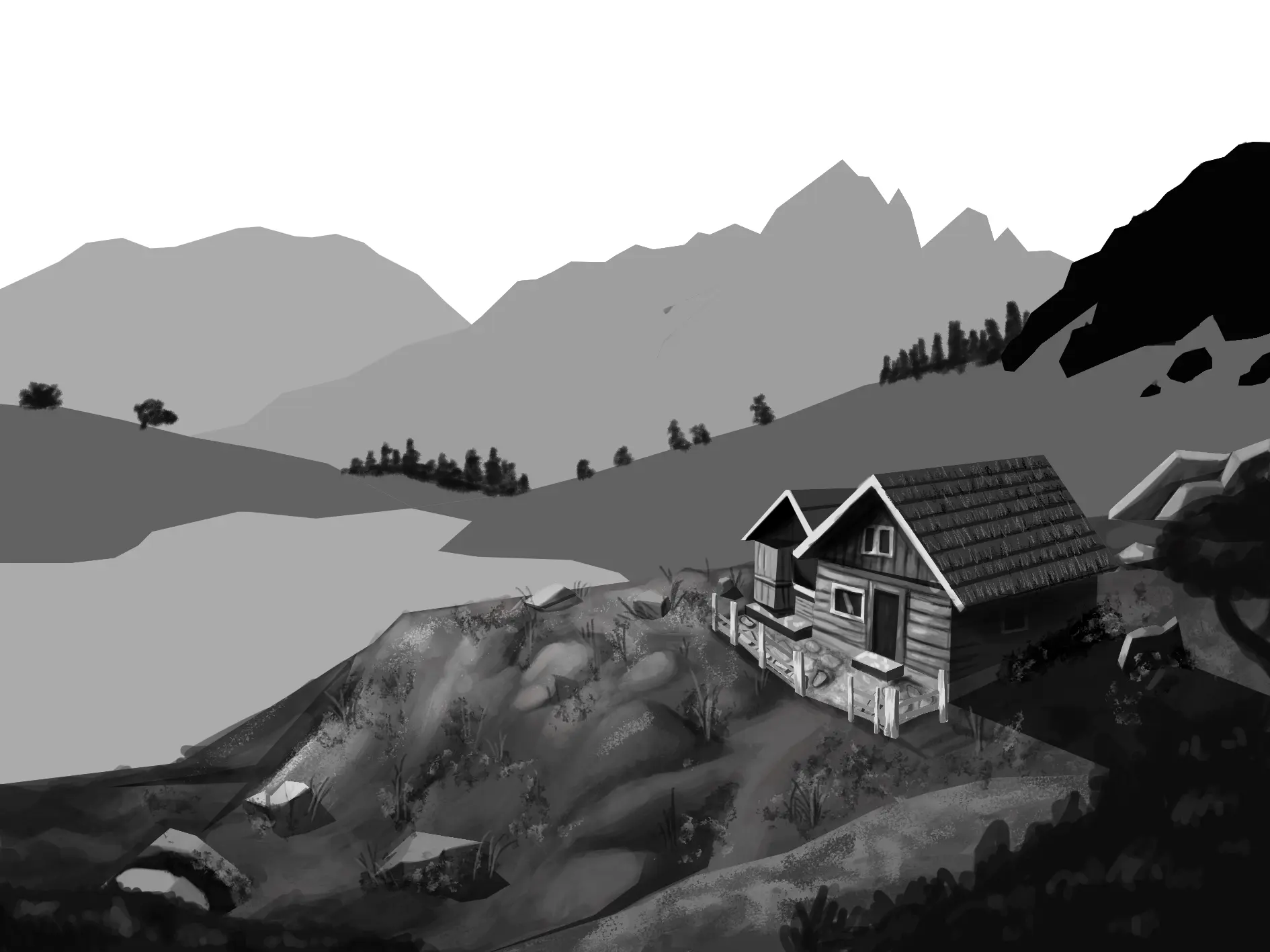
Remember that this plane is secondary: so don't try to detail it. A few well-placed lines and simple shapes are enough.
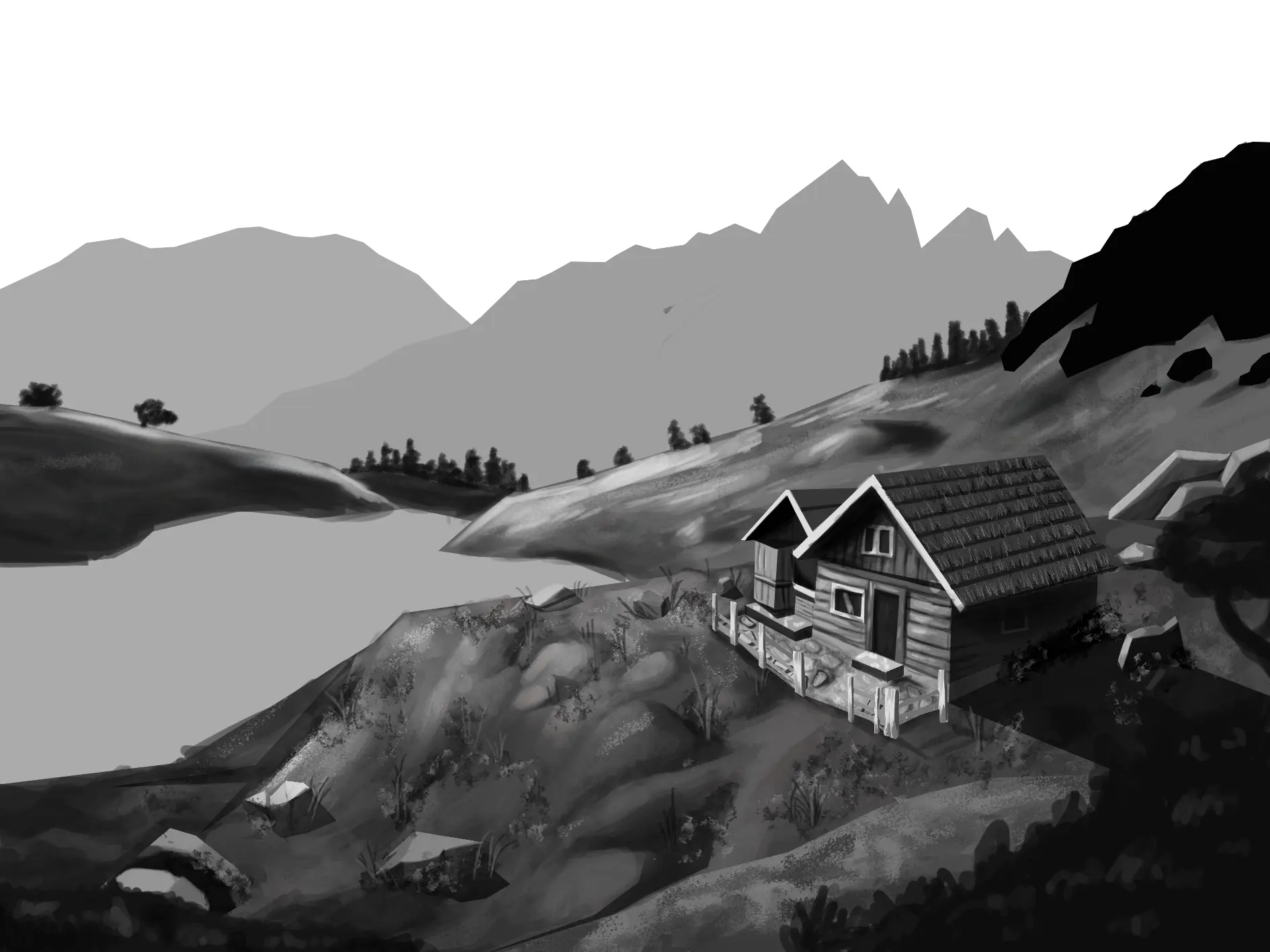
Finally, draw light on the rocks at the top of the hill using small, crisp strokes, and add some reflections on the water to give depth to the lake.
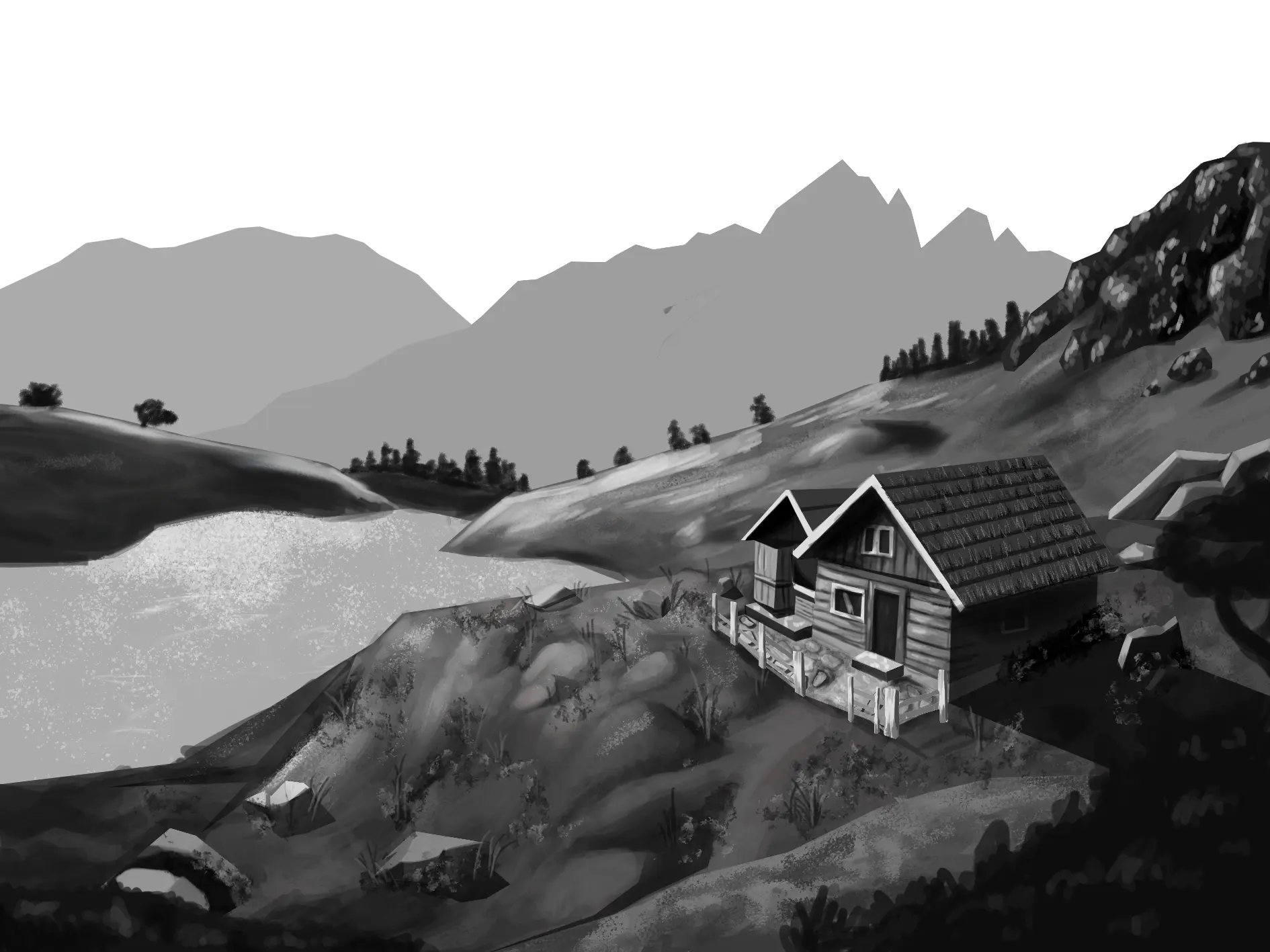
The background
The deeper you go, the more elements should be: softened, slightly blurred, and simplified.
Draw the background mountains with soft spots, then suggest the texture with a few light marks, without doing too much.
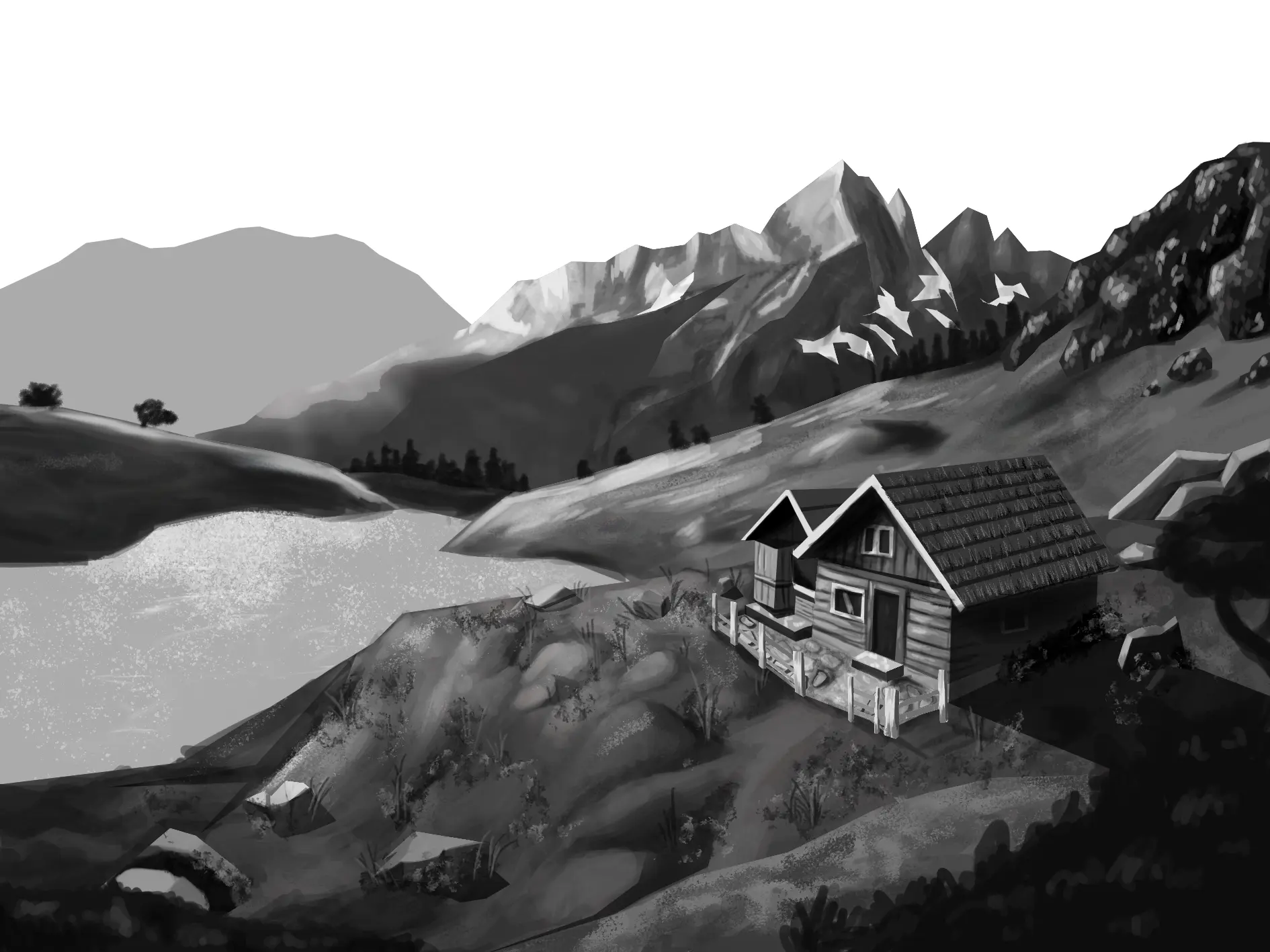
Adjust the lighting
Here comes one of the most enjoyable moments: once the scene is set, draw the sun and determine its position to set the direction of the light.
The lower it is on the horizon, the more intense the contrasts become. At noon, the light is more zenithal, the shadows shorter and less distinct.

There are many parameters to consider, that’s normal. Proceed step by step and allow yourself some trials.
Remember to consider the composition, articulate your depth plans, and adjust the values and level of detail according to the distance.
Writer and illustrator: Bryam


Magnifique, j'adore ces paysage en noir et blanc ! Merci pour ce tuto